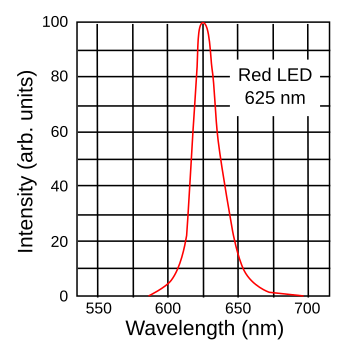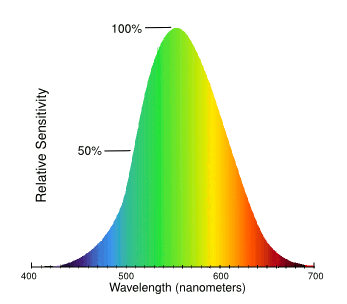Holidays 2018
December 23, 2018
Red and
green are the
traditional colors for
Christmas decorations. This is the likely consequence of the holiday's
historical association with
holly (genus ilex), which has green
leaves and red
berries. The red color is also reinforced by the modern image of
Father Christmas (a.k.a.,
Saint Nicholas and
Santa Claus, among other names) wearing a red
suit.[1] There's nothing like a good piece of
red velvet cake to reinforce holiday redness. Holly was also associated with
winter solstice celebrations such as
Yule.

The holly and the jolly. Left image, Ilex aquifolium, from the Atlas der Alenflora (1882) by Anton Hartinger. Right image, from a 1911 Christmas postcard. Both via Wikimedia Commons
Red is the principal color of many objects of
scientific interest, the best examples of these being the many sources of pure and
intense red
light. The first
gas laser, the
helium-neon laser, demonstrated in 1962, emits red light at a
wavelength of 632.8
nanometers (nm). The first
solid-state laser, the
ruby laser, demonstrated in 1960, emits a deeper red light at 694.3 nm. Red
light-emitting diodes are ubiquitous, and
AlGaInP/
GaAs LEDs emit at 625 nm.

Spectrum of a red light emitting diode (LED).
This particular type of LED is an AlGaInP/GaAs diode.
(Created using Inkscape.)
Planetary astronomers have two huge red objects on their minds, the
planet Mars, and
Jupiter's Great Red Spot. The reddish color of Mars comes from the
iron(III) oxide (Fe
2O
3) on it's surface. This iron oxide is also known by its
mineral name,
hematite, derived from the
Greek word for
blood.
Jupiter's Great Red spot is an
anticyclonic storm in the
atmosphere of Jupiter that's existed at least since 1830, and it's slightly larger in width than the
Earth. The exact cause of its red color is not known, but it might come from a
compound of
sulfur, or from some complex
organic molecules. The spot's redness might also be caused by an
allotrope of phosphorus,
red phosphorus, that has a deep red color.
There are other examples of redness outside our
Solar System, the most important of which is the
Doppler redshift of light emitted from the
recession of
astronomical objects in our
expanding universe. The star,
Betelgeuse, which is a part of the
Orion Constellation, is the
ninth-brightest star in the
night sky. It's also a
red supergiant star of spectral type
M. Red supergiants are cool and large. Betelgeuse has a surface
temperature of 3590
K, compared with our
Sun's 5,772K and a
radius that's about 900 times the
solar radius.

Seeing red in three worlds. Left image, portion of Jupiter's Great Red Spot, acquired on July 11,2017 by the Juno spacecraft (NASA/SwRI/MSSS/Gerald Eichstädt/Seán Doran image); middle image, a 1975 Viking 1 orbiter image of Mars, from NASA Website; right image, outline of a human hand, c. 25,000 BC, at the Pech Merle cave, France. This hand image in the Pech Merle cave was created with red ochre, a mixture of a large quantity of hematite with clay. All images from Wikimedia Commons.
Red was the only option for
laser pointers for a few years until inexpensive green
laser diodes became available. One of my
laser engineering colleagues built a green laser pointer for our
laboratory before they became a
commodity item, but I imagine that the
component cost was well over a $100 at that time. Green laser pointers emit at 532 nm, near the peak of the
human eye response.
For higher
power, green laser light is created by
doubling the intense
infrared light of a
neodymium or
chromium-
doped host
crystal by passage through a
nonlinear optical material that acts as a
"second-harmonic generator. Common neodymium hosts are
yttrium aluminum garnet (
Nd:YAG), and
yttrium vanadium oxide (
Nd:YVO4) Chromium-doped
chrysoberyl (
Cr:BeAl2O4) also acts as an infrared laser.
It's even possible to generate green light at 543 nm from a helium–neon laser.
Argon-ion lasers emit at 514.5 nm and 528.7 nm, and they are often used in
laser eye surgery.
Copper vapor can be used as a laser at 510.6 nm. There are many minerals colored green, a prime example being
emerald, which gets its color from chromium
atoms in its
beryl, Be
3Al
2(Si
6O
18), host crystal. We're all familiar with the green
patina on
copper, called
verdigris, that usually contains
copper carbonate (malachite) or
copper chloride.

The color sensitivity of the human eye peaks at green.
This curve was developed by asking study participants to equalize the perceived intensity of various pairs of colored lights, and then doing a mathematical analysis of these data.
(Modified Wikimedia Commons image.)
Reference:
- How Red And Green Became The Colors Of Christmas, NPR All Things Considered, December 20, 2016.
Linked Keywords: Red; green; tradition; traditional; color; Christmas decoration; history; historical; holly; leaf; leaves; berry; berries; Father Christmas; Saint Nicholas; Santa Claus; suit (clothing); red velvet cake; winter solstice; Yule; Ilex aquifolium; Atlas der Alenflora; Christmas; postcard; Wikimedia Commons; science; scientific; intensity (physics); intense; light; gas laser; helium-neon laser; wavelength; nanometer; solid-state laser; ruby laser; light-emitting diode; aluminium gallium indium phosphide; AlGaInP; gallium arsenide; GaAs; electromagnetic spectrum; Inkscape; planetary science; planetary astronomer; planet Mars; Jupiter; Great Red Spot; iron(III) oxide; mineral; hematite; Greek language; Greek word; blood; anticyclonic storm; atmosphere of Jupiter; Earth; chemical compound; sulfur; organic compound; organic molecule; allotrope of phosphorus; red phosphorus; Solar System; Doppler effect; redshift; Hubble's law; recession; astronomy; astronomical; metric expansion of space; expanding; universe; Betelgeuse; Orion Constellation; apparent magnitude; ninth-brightest star; night sky; red supergiant star; temperature; kelvin; K; Sun; radius; solar radius; Juno spacecraft; NASA; Southwest Research Institute; SwRI; Malin Space Science Systems; MSSS; Viking program; Viking 1 orbiter; Mars; human hand; Anno Domini; BC; Pech Merle cave; red ochre; mixture; hematite; clay; laser pointer; laser diode; laser; engineering; laboratory; commodity; electronic component; physiology of color perception; human eye response; power (physics); frequency doubling; infrared; neodymium; chromium; activator (phosphor); dope; crystal; nonlinear optics; nonlinear optical material; second-harmonic generator; yttrium aluminum garnet; Nd:YAG; yttrium orthovanadate; yttrium vanadium oxide; Nd:YVO4; chrysoberyl; Alexandrite; Cr:BeAl2O4; Argon-ion laser; laser eye surgery; copper vapor laser; emerald; atom; beryl; patina; copper; verdigris; copper carbonate (malachite); copper(II) chloride; copper chloride; color vision; color sensitivity; human eye; curve; clinical trial; study participant; intensity (physics); mathematics; mathematical; analysis; data.